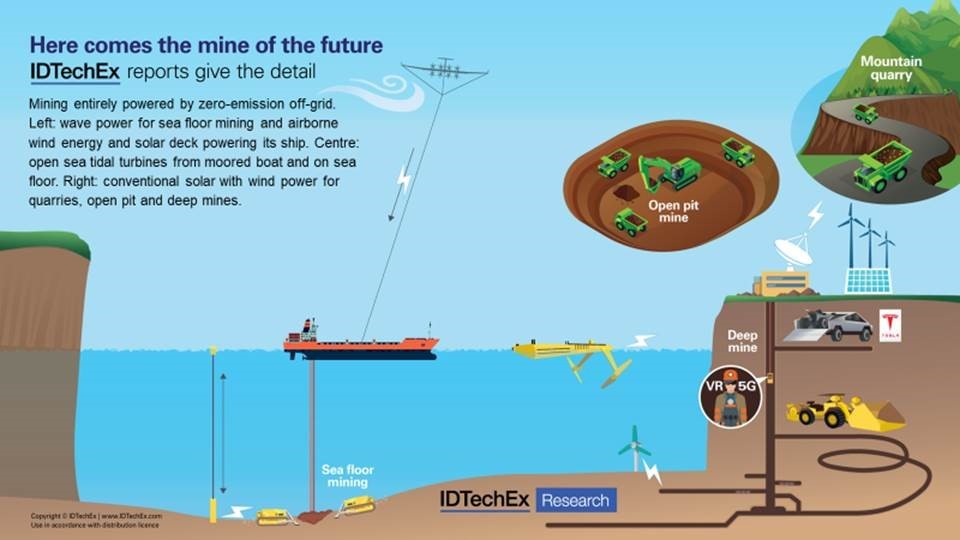$350bn in off-grid, zero-emission microgrids predicted
IDTechEx forecasts exponential growth to a huge $350 billion in 2040 for clean zero-emission microgrids. It will be driven by legislation, cost, increasing problems with national grids and many new applications.
Electrifying mines to farms and transport helps too. The new 230 page IDTechEx report authored by IDTechEx Chairman Dr Peter Harrop, ‘Distributed Generation: Off-Grid Zero-Emission kW-MW 2020-2040’ concerns electricity production with zero emissions that is off-grid or capable of being off-grid when needed. This is the future of much electric power generation, displacing heating oil to power stations.
Distributed generation capable of being islanded is a significant new market opportunity. Over 100 organisations are covered. The report provides technical, market and company information useful to all in the value chain from materials and software suppliers to developers, product and system integrators and facilities managers.
It concentrates on the present and the future and, in particular, benefits to society and opportunities for industry. The report primarily covers advanced countries because they are the largest value market, but there is also much information on emerging countries.

The executive summary and conclusions are enough for those in a hurry. It embraces market drivers including why grids lose share. It simply presents technology comparisons, timelines and market forecasts unusually for short and long term - 2020-2040 and why 2021 will be a big year for orders and advances. Learn 13 new photovoltaic formats.
A wealth of new infograms and graphs grasps the future of zero-emission electricity for buildings, construction, agriculture, mining, electric vehicle charging stations and more with clarity on how the improving microgrid systems design and harvesting fit in and when. From containerised to distributed, it is all here. The introduction gives energy trends, microgrid and energy harvesting design, progress in emerging countries, good and bad practice.
Chapter 3 covers the increasingly important containerised and modular ZE microgrids with 19 examples. Chapter 4 ‘Buildings, vehicles, ships as ZE microgrids’ has much that is not covered in other studies, yet large in potential. There are 18 projects and new ideas from IDTechEx.
Chapter 5 concerns distributed ZE microgrids across farm, island and so on with six examples assessed. Chapter 6 ‘New microgrid harvesting formats: roads, windows, other’ takes 30 pages to reveal winning applications and technologies for what is coming, with comparison tables and many operating examples from the pioneers. Good and bad are revealed. It is nonsense when so many treatises on ZE microgrids stop at wind and solar, so Chapter 7 ‘Wind, river and sea power as relocatable ZE microgrids’ shows how these are increasingly important with many examples of success and predictions but also bad practice is revealed.
Many comparison tables and maps are here and airborne wind energy is appraised. Given the importance and rapid improvement of it, Chapter 7 ‘Emerging photovoltaic technology for microgrids’ is one of the longest chapters with many new infograms, comparisons and predictions with examples and latest progress.
Chapter 8 covers appropriate power electronics and battery technology with cost predictions and gaps in the market. ‘Distributed Generation: Off-Grid Zero-Emission kW-MW 2020-2040’ is the latest, most comprehensive and insightful work on this subject. It is prepared by multilingual PhD level IDTechEx analysts travelling widely with up to 20 years background and privileged access to data.


